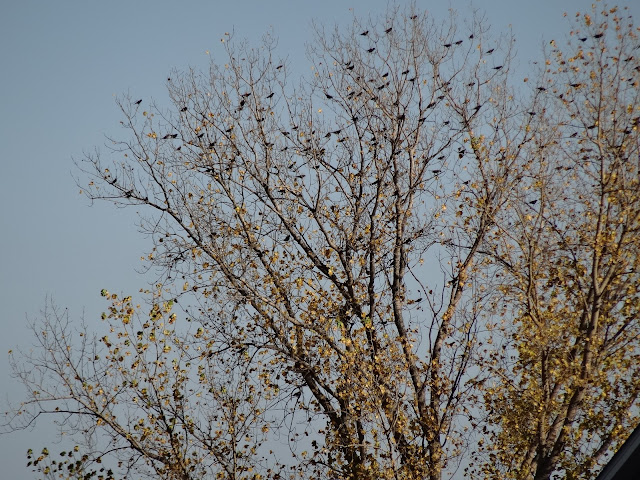After a month of no ducks on the pond at all, there have been many Mallards feeding and napping here. They are gathering to prepare for their fall migration. Mallards can indeed survive cold weather, but when they can no longer feed on live aquatic plants, insects in the water, or grain in snow-covered fields, it is time to fly south.
Each day in Autumn they search for food around the edge of the pond, nap in the warm sun, or practice their courtship moves. Mallards engage in seasonal monogamy, in which new pair bonds are formed each season. Usually they form these bonds on their wintering grounds. And with new handsome feathers after molting season, why not show off?
Some of the courtship displays by Mallards are rhythmic head-pumping, signaling interest. Males will show off by pulling both wings and tail up to show off purple-blue wing feathers. Or, the male will raise out of the water, pull his head up, and give a whistle (as above).






























